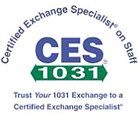A tax deferred exchange is a method by which a seller of property held as an investment or productive use in trade or business may defer paying tax on the gain by exchanging for other like kind property, which is also to be held for an investment or productive use in trade or business.
In a tax deferred exchange, a property owner disposes of and acquires investment property. The disposition and acquisition of the investment property transactions must be structured in such a manner that there is, in fact, an exchange rather than a sale. An exchange agreement provided by a qualified intermediary is the means by which the transaction is converted into an exchange. A qualified intermediary is the party helping to ensure the exchange is executed properly. Anyone who is selling investment property, with the intent to reinvest in like kind property, should consult with his/her tax advisor when considering doing an IRC 1031 Tax Deferred Exchange.
GUIDELINES FOR A SUCCESSFUL EXCHANGE (Total Tax Deferred Treatment)
PROPERTY VALUE: The fair market value of the Replacement Property must be of equal or greater value than the fair market value of the Relinquished Property.
EXCHANGE PROCEEDS: All Proceeds from the Relinquished Property transaction must be used to acquire Replacement Property in order to defer capital gains tax.
DEBT : Debt on the Replacement Property should be equal to or greater than debt paid off at the time of closing on the Relinquished Property. If you desire to acquire debt free Replacement Property, cash paid out of pocket by the Exchangor will offset new debt.
TIME DEADLINES: In a non-simultaneous exchange, the statutory time deadlines MUST be complied with.
(Note: You may receive partial tax deferred treatment even if all of the guidelines are not complied with, with the exception of the time deadlines. Consult with your tax and/or legal advisor if your transaction does not meet all of the above.)



